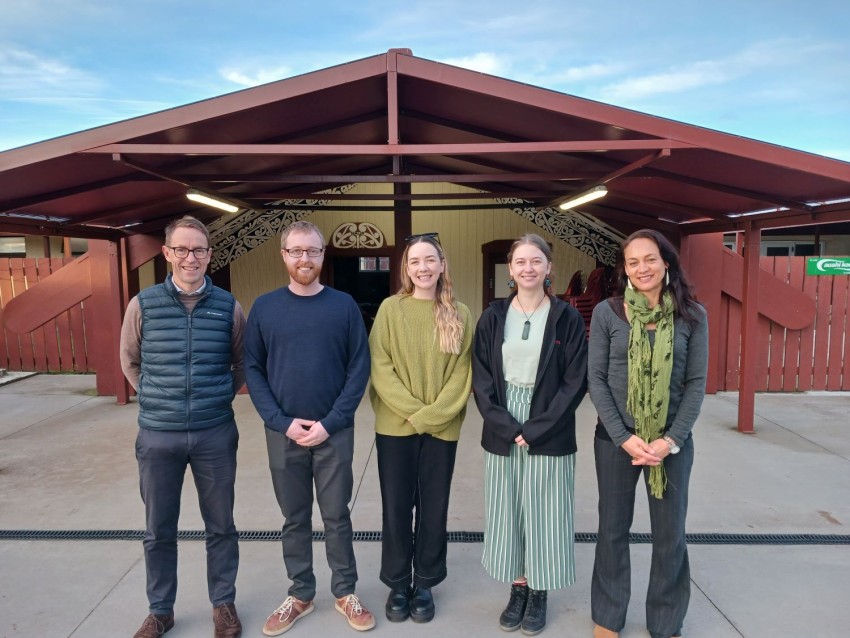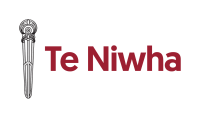| Sir Ashley Bloomfield and globally recognised infectious disease clinician and researcher Professor David Murdoch wrote an article for the New Zealand Medical Journal (NZMJ). In it they discuss where Aotearoa New Zealand, and the world, are at regarding infectious diseases. They ask the question ‘Are we better off now than pre-COVID?’ and provide suggestions for how New Zealand can best prepare for the ‘inevitable’ next infectious diseases threat. |
| From NEW ZEALAND MEDICAL JOURNAL (Vol. 137 No. 1604, 18 October 2024): |
| PANDEMIC PREVENTION, PREPARDENESS AND RESPONSE: ARE WE BETTER OFF NOW THAN PRE-COVID? |
| It is nearly 5 years since the start of the COVID 19 pandemic, and infectious disease outbreaks continue to cause international concern. Mpox in Africa was recently categorised by the World Health Organization (WHO) Director-General as a Public Health Emergency of International Concern (PHEIC), while highly pathogenic avian influenza has spread to a range of non-avian species around the globe and has infected humans in several countries. Yet there is a sense of ‘collective global amnesia’ about the COVID-19 pandemic. Investment in pandemic prevention, preparedness and response (PPPR) is nowhere near the scale or speed necessary. Despite repeated warnings from experts, numerous initiatives and the direct lived experience of a major pandemic, the level of activity does not match that required to mitigate the widespread health, social and economic impacts of the next (inevitable) pandemic. The risk is that we are falling into what has been dubbed ‘the cycle of panic and neglect’. Despite waning international political will and the relatively slow pace of progress, all countries can and should apply clear lessons from COVID-19 to their own situations and update their plans to prevent, prepare for and manage the next major infectious diseases risk. In New Zealand, the Royal Commission of Inquiry into COVID-19 – Te Tira Ārai Urutā is due to report in November 2024. The recent announcement of a second stage to that Inquiry, which is not reporting until early 2026, means that many lessons from the COVID-19 pandemic may not be reflected in New Zealand’s pandemic preparedness until more than 3 years after the last pandemic was considered over. However, the COVID-19 experience here and in other countries, and work undertaken by WHO and others, provides some clear pointers about how our pandemic preparedness can be strengthened. The recent publication of an updated national pandemic plan, ‘New Zealand Pandemic Plan: A framework for action’, is an important milestone and starting point for integrating key lessons. |
| Avoid reliance on an influenza centric pandemic plan |
| The immediate challenge in the early stages of the COVID-19 pandemic was that existing pandemic planning, both in New Zealand and most other countries, was largely focussed on influenza. The 2017 ‘New Zealand Influenza Pandemic Plan: A framework for action’ was designed with the expectation that a new pandemic threat would either be or behave similarly to influenza. However, it became quickly apparent in early 2020 that COVID-19 was not behaving like seasonal influenza, and a shift to the ‘manage it’ phase of the plan would likely overwhelm the health system and result in unacceptable loss of life, as was being witnessed in many countries at the time. A significant shift in strategy was required, making it clear that pandemic planning must incorporate the ability to adapt to the specific characteristics of the pathogen at hand. This was one of the earliest key lessons from COVID-19. |
|
|
| The importance of clear leadership and decision-making structures |
| The huge uncertainty and complexity of the COVID-19 pandemic also demonstrated the centrality of leadership and decision-making for both pandemic planning and for responding to security threats more broadly. Each country’s response varied significantly, and in New Zealand it became clear early on that leadership structures envisioned in planning frameworks needed to be rethought rapidly to respond to the evolving situation and the emergence of elimination as the overall strategy. Rapid, highly co-ordinated cross-government leadership and decision-making were needed. The complexity of the situation meant that no pre-existing framework could fully account for the range of challenges the pandemic posed. Countries had to make decisions quickly, often with incomplete information, while co-ordinating resources, public health measures and communication strategies across multiple sectors. |
| Beyond a health crisis: planning for a whole-of-society response |
| COVID-19 did not just present a threat to public health - it was a significant threat to New Zealand’s economic and social security. The pandemic disrupted supply chains and schools, closed businesses and exposed inequities. The pandemic demonstrably required a whole-of-government and whole-of-society response, confirming that pandemic planning should do so as well. Our view, which has implications for preparedness, is that pandemics should be considered primarily as a security threat rather than simply a health threat. Pandemic preparedness and response are not for public health experts alone. Thus, planning should be ‘owned’ and led by the country’s security apparatus, currently based in the Department of the Prime Minister and Cabinet to ensure that pandemic responses are able to, from the get-go, address threats to economic and social wellbeing as well as public health. |
| Global preparedness strengthens collective and individual country responses |
|
| Key global frameworks, such as the legally binding International Health Regulations (IHR) have been updated to reflect the lessons learned from COVID-19. Between November 2022 and June 2024, the IHR were amended by the 196 signatory countries (including New Zealand) to strengthen global cooperation on pandemic preparedness and response. A key focus of these updates was equity - ensuring that every country, regardless of their resources, has the tools and support they need for PPPR - which has benefits for all countries. At the same time, the updated IHR maintains the sovereignty of individual countries, allowing them to make their own decisions about how best to respond, while drawing on non-binding guidance from the WHO and its Director-General. This dual emphasis on global solidarity and national autonomy is vital. Future pandemic threats are inevitable, and a co-ordinated global response can mitigate their impact. However, individual countries must also be equipped to respond in ways that reflect their unique circumstances and needs - just as New Zealand did in its response to COVID-19. |
| Progress in New Zealand: the updated New Zealand pandemic plan |
| The updated national pandemic plan, published in July by the Ministry of Health – Manatū Hauora, is an important step towards strengthening New Zealand’s preparedness. This plan is an interim update, with the findings of the Royal Commission of Inquiry to be incorporated in due course. More importantly, this also signals that pandemic planning is dynamic and will continue to evolve. This reflects another valuable lesson from the COVID-19 response—planning is an ongoing process rather than just a plan per se. This planning process should regularly test and evaluate the core ‘pillars’ of a response, including leadership, decision-making, communications and technical advice, against a range of potential pandemic pathogens on a continuous basis. The process should also regularly incorporate lessons learned. We consider that the plan should be updated at least annually and that there are at least biannual exercises to test it against different potential pandemic pathogens (including the hypothetical unknown “pathogen X”). Currently, the plan focusses on respiratory pathogens; recent and ongoing outbreaks of Mpox remind us that we need to prepare for diseases caused by pathogens pre dominantly spread through other routes as well. Additionally, there is a need to ensure the essential elements of the updated plan are easily accessible to those who need to use it. The updated plan is over 200 pages, and a helpful next step would be an easily navigable online version of the plan, broken down into accessible modules with links to key resources and tools. This would make the plan more usable both in training exercises and during an emergent pandemic, ensuring that all stakeholders - including government officials, frontline workers and communities - can easily find the information they need. It could also be more easily updated to integrate lessons learnt from emerging evidence, the development of new technologies such as vaccines and the repeated scenario testing to ensure the plan’s key elements work in practice. |
| In conclusion |
| Our view, borne out by the COVID-19 pandemic, is that PPPR is a fundamental aspect of national security, demanding sustained investment and a whole-of-government approach to ensure readiness for future threats. Pandemic planning must be a living, adaptive process integrating lessons learnt from emerging evidence, the development of new technologies such as vaccines and the repeated testing of plans to ensure they work in practice. In doing so, countries can build a more resilient response, capable of adjusting swiftly and effectively to future threats. As a country, we also need to ensure we have the infrastructure to underpin and support PPPR. This critical infrastructure resides not only within EMBARGOED the healthcare and public health systems; it includes infrastructure to support government and public administration, supply chain and logistics, information and communication technology, essential services, financial systems, community services and the education system. The lessons learned from COVID-19 should serve as a catalyst for continued improvement in pandemic planning. By embracing an iterative planning process, establishing and empowering cross-government leadership, viewing pandemics through a security lens and enhancing accessibility to planning resources, we can better prepare for future challenges. The goal is to ensure that our strategies are resilient and adaptable, ready to face whatever new threats may arise so that we are best placed to manage future pandemics—of any kind – effectively. |
LINK Original article: New Zealand Medical Journal. |


 SIR ASHLEY BLOOMFIELD WAS A MENTOR FOR TE NIWA FELLOWS
SIR ASHLEY BLOOMFIELD WAS A MENTOR FOR TE NIWA FELLOWS PROFESSOR DAVID MURDOCH
PROFESSOR DAVID MURDOCH
